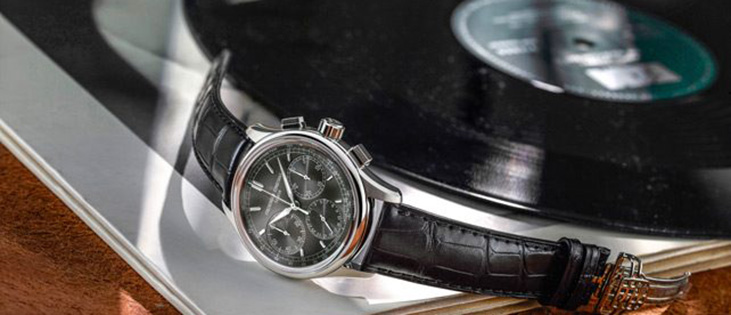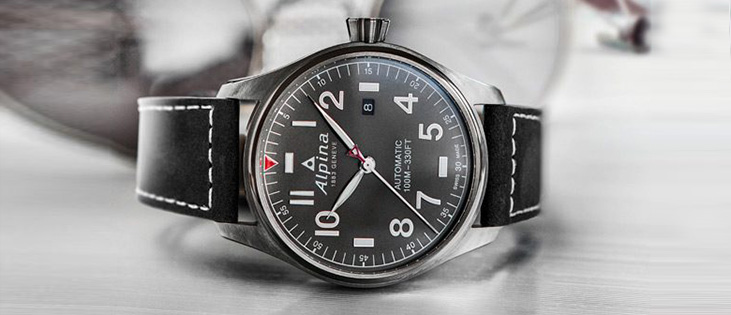Frederique Constant is known for manufacturing complicated Swiss watches at relatively affordable prices. Last year at Baselworld, they stunned the world with a fairly attainable in-house perpetual calendar – and this year they’ve done the same with a beautiful in-house flyback chronograph. With the flyback, the chronograph hand can be stopped, reset to zero, and restarted with one push of a button. It comes with a 42mm case in both stainless steel and rose gold, and a number of dial options, as well as a see-through caseback.
It sits extremely well on the wrist, and looks and feels very authentically Swiss – it could even be mistaken for a Patek Philippe. We sat down with Aletta Stas, one of the founders of Frederique Constant, to discuss not only the flyback chronograph but also the impending Indian launch of the 130-year-old Swiss sports watch brand, Alpina – which is now owned by Frederique Constant.
How is the Indian market doing for Frederique Constant?
India is starting to become more important, and I expect that to continue in future as well. Last year, we grew by 12% and this year we expect double-digit growth again. We already have 53 points of sale in India, so now people know the brand. We even have a special edition for India with Hindi numerals. We also plan to start the Alpina brand in India very soon, so that’s really exciting. We have high expectations for Alpina, because it’s a sport brand that’s also very elegant. I think classical pieces are appreciated more in India, because when people spend their money they want to have something that demonstrates a certain value.

You’re able to produce some very affordable complicated watches. How are you able to create this balance between complicated movements and relative affordability?
This was our mission when we started to offer accessible luxury. We’re always examining the methods in our factory to ensure that they’re as efficient as they can possibly be. And for the chrono, for instance, we have a flyback module that’s only 96 pieces. So, not only is it cheaper but also faster to assemble and cheaper as well.
What’s your view on smart watches?
In 2015, we came up with our first smart watch – and now we have a smart watch for ladies as well. It has activity alerts, a world timer, and quite a few functions but its not too complicated and still looks elegant. For a Swiss watch brand, if you go to an Apple watch or an Android watch, you lose your competitive edge because then it’s not necessary for it to be Swiss made. If you have a projected dial, it’s not Swiss anymore. So, we said, okay, the technology is there and there’s a possibility to make all our Quartz watches smart – but we still want to be a real Swiss brand, with watches that look really elegant. That’s why we chose to go ahead with the horological smart watch. We now also have a smart buckle, wherein a small extension on the buckle of a typical leather strap tracks your activity. So, you can even wear your chrono, pair the strap to your phone and track your activity.

Could you talk us through the new chrono?
It’s a flyback chrono, and it’s priced extremely competitively. We’ve been working on this for the past six years. A chrono is actually the most difficult movement to make. People often think that a tourbillon is the most difficult, but that’s not true. A chrono is the most difficult. So that’s why it took a while to launch in large quantities. Right now, we’re able to make 500-1,000 pieces a month.
How long would manufacturing one movement for the chrono take?
The way we’re set up now, including extensive testing, it would easily take a week. And that’s only the movement; then you have to assemble the watch.
